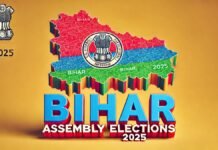
Key points
- Cabinet-level approval to form the 8th Pay Commission was announced in early 2025; formal setup and ToR are awaited.
- Employee unions demand the hike be effective from January 1, 2026, even if recommendations are finalized later, mirroring the 7th CPC’s arrears pattern.
- Fitment factor expectations vary widely, implying a basic pay increase band from roughly 13% to over 30% once DA is reset to zero at implementation.
- Around 1.15 crore beneficiaries, including 48–49 lakh employees and 65–68 lakh pensioners, are expected to be covered.
New Delhi: Central employees and pensioners are likely to see changes under the proposed 8th Pay Commission from January 2026, but the final rollout timeline depends on formal constitution and Terms of Reference being notified by the Union Government, with unions pushing for a retrospective effective date even if implementation slips past early 2026.
What’s officially approved
The government has announced the formation of the 8th Central Pay Commission to revise pay, allowances, and pensions, with the move publicly confirmed by cabinet briefings in late 2024 and early 2025; however, detailed Terms of Reference and the commission’s formal constitution are still awaited, which is the next procedural step before consultations begin. Multiple summaries from policy trackers and financial services note a target effective date of January 1, 2026, aligning with the 10-year cycle since the 7th CPC became effective on January 1, 2016.
Implementation date and arrears
Shiv Gopal Mishra of NC-JCM has publicly argued that the hike should be effective from January 1, 2026, regardless of administrative delays, citing the principle that pay commission effects should not exceed a 10-year gap and recalling that 7th CPC recommendations were implemented mid-2016 with arrears from January 2016. Media reports underscore that while crediting revised pay in January 2026 appears unlikely without a constituted commission and completed report, a retrospective effective date with arrears remains the central demand from staff unions.
Expected salary hike and fitment factor
Recent explainer updates suggest a broad expectation band for the fitment factor—ranging from approximately 1.8 to as high as mid‑2s—translating to basic pay increases that could headline as roughly 13–34% after DA is reset to zero on switchover, though net in-hand impact varies by level and allowances. Illustrations published by policy and finance portals show that the same fitment factor applied across the pay matrix can yield substantial jumps in basic pay, but subsequent recalibration of DA and HRA will shape the overall gross and net changes.
DA reset and allowance recalibration
On implementation, Dearness Allowance typically resets to zero, with future DA builds restarting from the revised base, which tempers the immediate net hike even when the fitment factor lifts the basic markedly; HRA and other allowances are then recalculated off the new basic. Several trackers also note projections that DA could have approached high levels by early 2026 under the 7th CPC, which would be merged into the new base when the 8th CPC takes effect.
Beneficiaries and scope
Coverage is expected to include roughly 48–49 lakh serving central government employees and about 65–68 lakh pensioners, with the commission’s remit spanning basic pay, pensions, and key allowances within the revised pay matrix framework. Historical context indicates this is the regular decadal exercise following the 7th CPC’s 2016 implementation, maintaining continuity in periodic pay structure reviews for central staff and retirees.
Timeline risks and next steps
Typical commission workflows require 18 months for report preparation plus additional months for cabinet review and approval, which poses a risk that the administrative process may run beyond early 2026; unions therefore emphasize keeping January 1, 2026 as the effective date to preserve the 10-year cadence with arrears as needed. Public communications imply that the decisive near-term step is issuance of the Terms of Reference and formal constitution, which would allow structured consultations with stakeholders and drafting of recommendations.
Political calendar and festive announcements
Speculation persists that significant announcements could cluster around major festivals or state poll windows, but current authoritative reporting focuses on the procedural path ToR issuance, commission formation, consultations, and report rather than specific festive dates, suggesting that any timing alignment would be contingent on administrative readiness. Media briefings highlight that, until the commission is formally set up, concrete timelines for rollout remain indicative even as the effective date demand hardens from staff bodies.
What to watch
- Formal Gazette notification of the 8th CPC and its Terms of Reference.
- Early signals on the working fitment factor range emerging from consultations and drafts.
- Clarifications on DA merger, HRA slabs, and pension indexation under the new matrix.









































